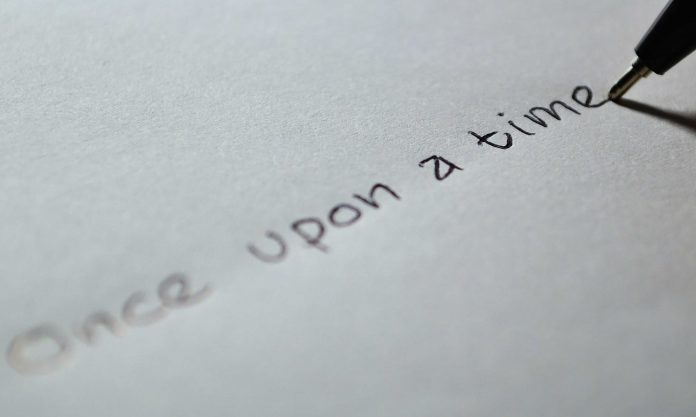Full disclosure: Creating a short premise statement or elevator pitch for my novels has always been difficult for me. I know my stories inside and out, but what are the one or two things that are most important to communicate to a reader (or agent)? What is the one sentence that can keep me on track from Chapter 1 to The End? If you struggle with that too, Lynnette Burrows offers some advice on crafting a story sentence in a new post on Writers in the Storm.
“There are a lot of pieces to plot and it can be overwhelming,” Burrows says. “So let’s pare it down to a bite-sized chunk—the story sentence.” The story sentence isn’t a tagline and it’s not for marketing. Rather, it’s a tool for keeping your plot on-track. Burrows struggled with the concept as well, until she took Holly Lisle’s “How to Revise A Novel” course.
“Simply put, she advised that the sentence included a protagonist, an antagonist, a conflict, and a hook,” Burrows says. “She recommended the sentence should be no more than thirty words in length.” Burrows breaks down the story sentence into its component parts:
“An [adjective] [focal character] needs [to do something] for [an important personal reason] but [an adjective] [obstacle] needs [something] which [verb of conflict or stakes].”
Look easy? If it were, anyone could do it! Burrows explains the components like this:
- Focal character: Your protagonist. “Instead of a name, identify your character by her predominate character trait, job or vocation, or role in the story,” Burrows says. “The adjective you choose to enhance your character should describe a small part of what makes your character unusual.”
- The Need. What’s missing from your character’s internal life? What obstacle is preventing them from becoming the person they wish to be? What do they have to do?
- To Do What? Why do they need to change? What important event or challenge requires them to overcome their weakness? In other words, what desire is strong enough to force them to fulfill their need?
- The Obstacle. “The obstacle is a person, place, or thing that may cause the focal character to fail,” Burrows writes. “The weather, the geography, internal flaws, or even a culture can be an obstacle. Often the obstacle is the antagonist and actively keeps your focal character from attaining her goal.”
“The sentence is a tool,” Burrows reminds us. “It is not static or unchangeable. If you change your mind at any stage of the writing process, you can pause and rewrite the sentence. Rewrite the sentence before you revise your story. It will help you through the revision process.”












